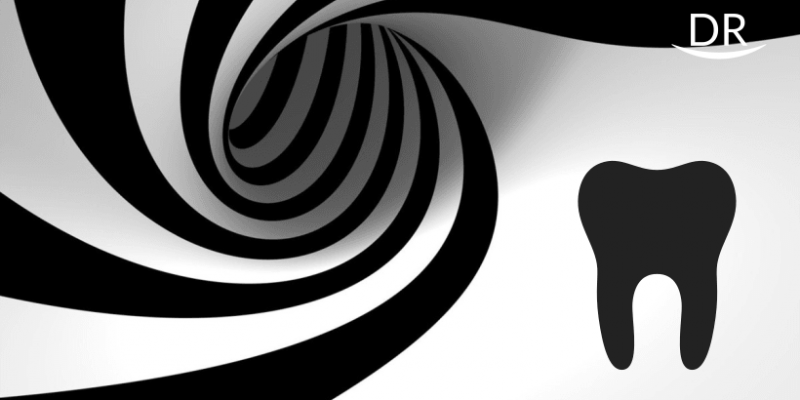Introduction
Silver diamine fluoride (SDF) and Zirconia crowns are widely used in pediatric dentistry. The use of SDF renders the teeth black and Zirconia is widely accepted as tooth coloured material crown. In this article, we will be discussing about both these less-talked-about aspects of pediatric dentistry.
Silver diamine fluoride (SDF)
It is a colourless topical agent, first developed in the 1960s in Nishino, Japan. The fluoride content in SDF is 44,800 ppm maintaining the pH of 10.
Composition of SDF
SDF solutions contain ammonia, silver, and fluoride. The fluoride content in SDF solutions varies from brand to brand. SDF is a colourless topical agent (38% w/v Ag(NH3)2F, 30% w/w) comprised of 24.4–28.8% (w/v) silver and 5.0–5.9% fluoride, at pH 10, and marketed most commonly as Advantage Arrest by Elevate Oral Care LLC, West Palm Beach, Florida, USA. The composition may vary depending on the brands and the manufacturers. Table 1 presents some of the brands of SDF available.


Mechanism of action of SDF
The SDF reacts with hydroxyapatite, resulting in silver phosphate and calcium fluoride, which forms a reservoir of fluoride and phosphate ions promoting remineralisation. The silver ions penetrate the lesions and remain there to exert their influence (25–30 microns into the enamel, 200–300 microns into the dentin, and up to 2 mm into a deep carious lesion). The presence of silver compounds such as silver oxide and silver phosphate leads to black staining of the carious lesions.

Indications of SDF
High caries risk
- Behavioural or medical management challenges
- Multiple lesions – not all can be treated in one visit
- In carious lesions that are difficult to treat
- Without access to or with difficulty accessing dental care
Tooth selection
- Absence of clinical signs related to inflamed pulp or history of spontaneous pain
- Carious lesions that are not infringing on to the pulp – on radiographs
- Carious lesions on any surface that are accessible with a brush during SDF application
- Before placement of restoration as a cariostatic means
Other uses
- Hypersentivity
- Treatment of infected root canals (1:10 dilution)
- Strengthen endodontically treated teeth (laser=sdf)
- Treatment of molar incisor hypomineralization (MIH)
- Treatment of recurrent caries (secondary caries)
- Indirect pulp treatment (IPT)
- Arresting caries to maintain the teeth nearing exfoliation
- As a substitute to sealants
Contraindication of SDF
- Silver allergy
- Relative contraindications: desquamative gingivitis or mucositis
Precautions with SDF
- Contact with soft tissue should be avoided since the material may produce transient gingivitis or black discolouration
- Rubber dam or cotton rolls should be used
- Coat the gingival tissue with petroleum jelly
Procedure of SDF application
- Protect gingiva and mucosa using petroleum
- Isolate and dry the area
- Apply SDF using micro-brush
- For proximal decay use super floss application
- Allow to soak for 1-3 minutes

Disadvantages of SDF
- Metallic/bitter taste
- Temporary staining to skin – resolves in 2-14 days
- Mucosal irritation/lesions – resolved within 2 days
- Sensitivity to light – to be stored in dark/opaque container
- High fluoride concentration (44,800 ppm) of 38% SDF – causes dental fluorosis if large doses used in young children
- Cytotoxic to fibroblasts (Fancher et al 2017) – increased pulp cell death when the remaining dentin thickness is less
Besides silver diamine fluoride, amine fluoride is also used in preventive dentistry. Click here to know more.
Zirconia crowns
The chemical composition of zirconia is Zirconium Dioxide. Zirconia crowns are prefabricated for primary teeth.
Indications of Zirconia Crowns
- Esthetics
- Hypoplastic defects or with developmental anomalies
- After pulp therapy
- Patient allergic to nickel and contraindicated for stainless steel crown
- Fractured teeth
- Minimum 1-2mm of supra-gingival healthy tooth structure.
Contraindications of Zirconia Crowns
- Crowded dentition
- Sub-gingival soft caries
- If orthodontic appliance requires soldering to be done on crown
Steps for Pediatric Zirconia Crowns
Burs required for teeth preparation are

Step 1
Crown selection: Choose appropriate size of crown using mesio-distal width
Step 2
Incisal preparation: Cut 1.5 to 2 mm incisal edge of tooth
Step 3
Supragingival preparation: Create chamfer margin all around the tooth by reducing 0.5-1mm of tooth structure

Step 4
Subgingival preparation: Remove chamfer margin extend 2mm subgingivally without ledge formation.
Step 5
Check fit and preparation: Round off line angles. Crown should fit passively. Clean crown with water and alcohol and control the bleeding.
Step 6
Cementation: Cementation of crown is done with glass ionomer cement.

Precautions with zirconia crowns
- Don’t push the crowns
- Check for occlusion before cementation of crown
- Check the alignment before applying constant force during cementation
- Keep all the sizes of crown while doing the case
Advantages of zirconia crowns
- High strength
- Chemically resistant
- Wear resistant
- Biocompatible
- Esthetics
You can read about all crowns used in pediatric dentistry by clicking here.
Conclusion
For practitioners, being able to provide children with aesthetics and function is truly satisfying. Using the advanced biomaterials available today, clinicians can achieve healthy and happy outcomes for their pediatric patients, giving both them and their parents not only what they desire, but also what they need.




















Comments